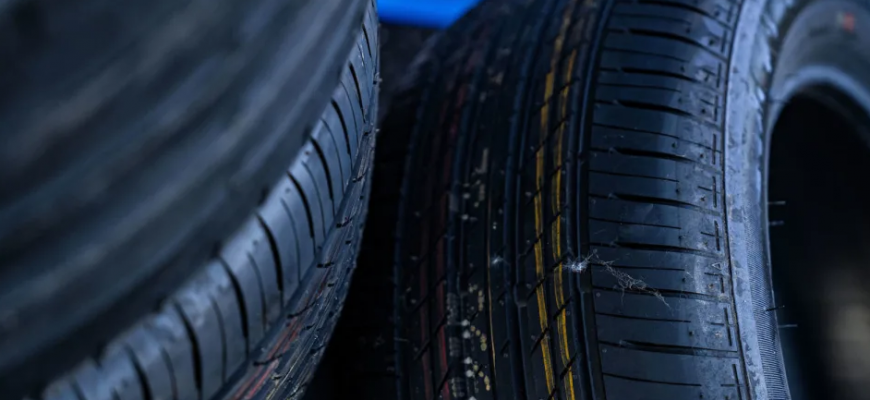How Overinflated Tyres Are Quietly Destroying Your Car’s Performance and Putting Your Life at Risk!
Motorists across the country are being warned about the dangers of driving with overinflated tyres, as the risk of accidents and blowouts increases significantly. Experts emphasise that excessive tyre pressure can lead to instability, affecting the vehicle’s handling, cornering ability, and braking performance.
How Overinflation Affects Handling
Even a slight deviation in tyre pressure, measured in psi (pounds per square inch), can have a profound impact on a vehicle’s handling, particularly on wet roads. Lower tyre pressures reduce load capacity and stability, while higher pressures provide greater capacity. Properly inflated tyres ensure even weight distribution across the tyre’s footprint, promoting stability and control.
However, underinflated tyres wear out unevenly, with the tread’s shoulder sections wearing faster than the centre due to inadequate support. When tyres encounter wet roads, factors such as tread depth, speed, and vehicle weight influence the risk of hydroplaning, where water reduces friction between tyres and the road, leading to loss of traction.
Preventing Accidents
In the event of hydroplaning, experts advise against slamming on the brakes. Instead, gradually release the gas pedal until steering control is regained. Properly inflated tyres maintain adequate pressure in the tread’s centre, preventing collapse and ensuring traction, especially in wet conditions. Driving with underinflated rear tyres is particularly challenging, requiring the driver to slow down to regain control.
Importance of Maintenance
While tyre manufacturers design tyres for optimal performance, neglecting tyre pressure maintenance compromises safety. Motorists are urged to adhere to recommended tyre pressures specified in the vehicle’s handbook or tyre placard. Regularly checking tyre pressure, ideally once a month, is crucial to prevent handling issues and excessive wear, particularly before embarking on long highway journeys.
Wear and Tear
Incorrect tyre pressure not only affects handling but also leads to excessive tyre wear and damage to sidewalls, increasing the risk of tyre bursts. Maintaining equal tyre pressure on all sides is essential for stability and adaptability on the road. Overinflated tyres are more susceptible to damage, deformation, reduced grip, and accelerated wear, especially in the centre.
Driving with overinflated tyres poses serious safety risks and can lead to accidents, blowouts, and excessive tyre wear. Regular maintenance and adherence to recommended tyre pressures are vital to ensure safe and efficient vehicle operation on the roads. Stay informed, stay safe.
Worn Tyres: Is Saving A Few Dollars Worth The Risk On The Road?

Drivers in Australia are being cautioned against the use of part-worn car tyres due to potential safety risks, particularly when the weather starts to get colder. While cheaper than new tyres, purchasing part-worn tyres, which have been removed from other vehicles but still have significant tread life, poses hazards that may not be immediately visible.
According to industry experts, a substantial number of part-worn tyres, estimated at 5.5 million annually, are sold in Australia. These tyres often originate from countries like Germany, where drivers replace tyres with adequate tread depth before reaching the legal limit, making them suitable for resale as part-worn tyres in Australia.
Part-Worn Tyres Overview
Part-worn tyres are essentially previously used tyres that still have usable tread life. They account for approximately 10% of all tyre sales in Australia. Imported part-worn tyres must meet specific regulations to be considered road-legal and safe for use.
Regulations in Australia
In Australia, regulations dictate that second-hand tyres must be in good condition, free from bulges in the sidewall, large cuts in the tread, or any visible structural damage. They should have a minimum tread depth of 2mm across the width and circumference and must be clearly marked as “part-worn” in uppercase letters at least 4mm in height on the sidewalls. Despite these regulations, some suppliers may not comply, and consumers are urged to ensure that any part-worn tyres they purchase meet these standards to avoid potential accidents.
Pros and Cons of Part-Worn Tyres
While part-worn tyres offer cost savings compared to new ones, they do not last as long and may require more frequent replacement. The initial savings may be offset by the shorter lifespan of part-worn tyres, making the long-term cost-effectiveness questionable. Additionally, part-worn tyres may have less grip, particularly in wet conditions, increasing the risk of accidents.
Furthermore, studies have shown that a significant portion of part-worn tyres sold in Australia do not comply with regulations, with some considered potentially dangerous due to hidden damage or incorrect repairs. Therefore, while part-worn tyres may seem like a budget-friendly option, the potential safety risks associated with them should not be overlooked.
Alternatives to Part-Worn Tyres
In addition to new and part-worn tyres, consumers in Australia have the option of remoulded or retreaded tyres. Remoulded tyres, if manufactured in compliance with regulations, can offer a cost-effective and environmentally friendly alternative to new tyres.
Ultimately, the decision to purchase part-worn tyres in Australia depends on individual preferences and risk tolerance. However, given the potential safety concerns and regulatory issues associated with these tyres, many experts recommend opting for new tyres or certified remoulded options to ensure maximum safety on the road.

